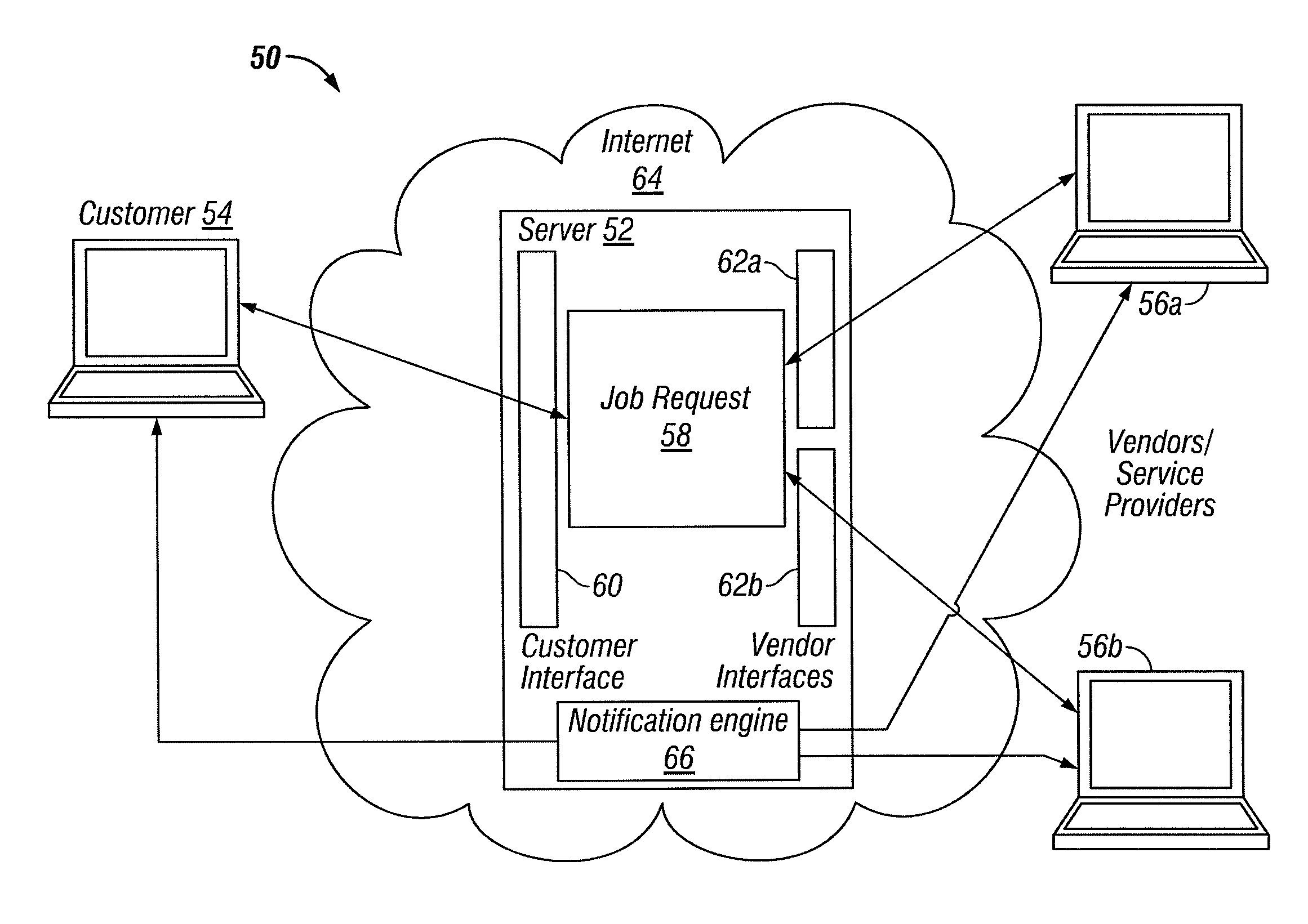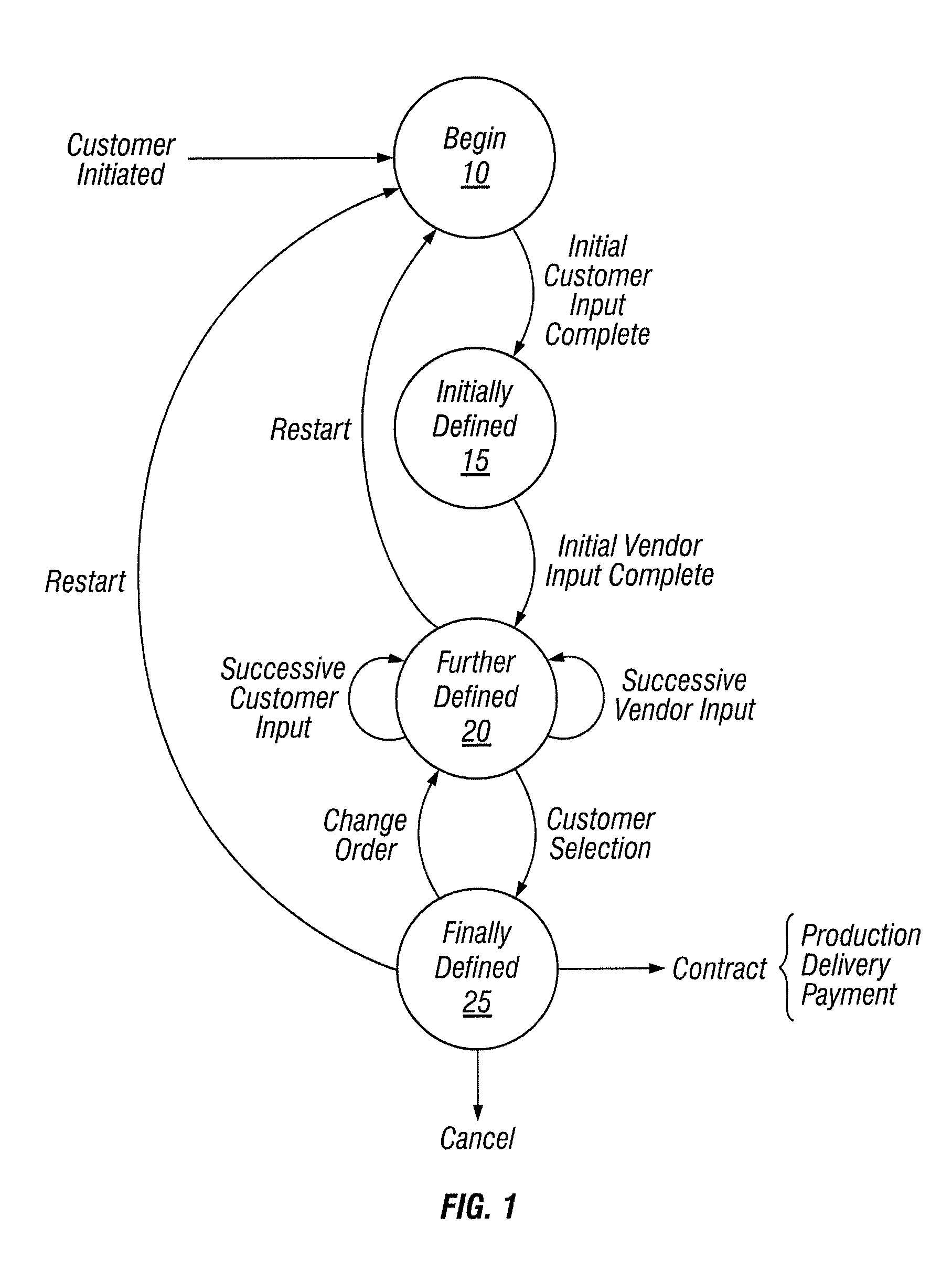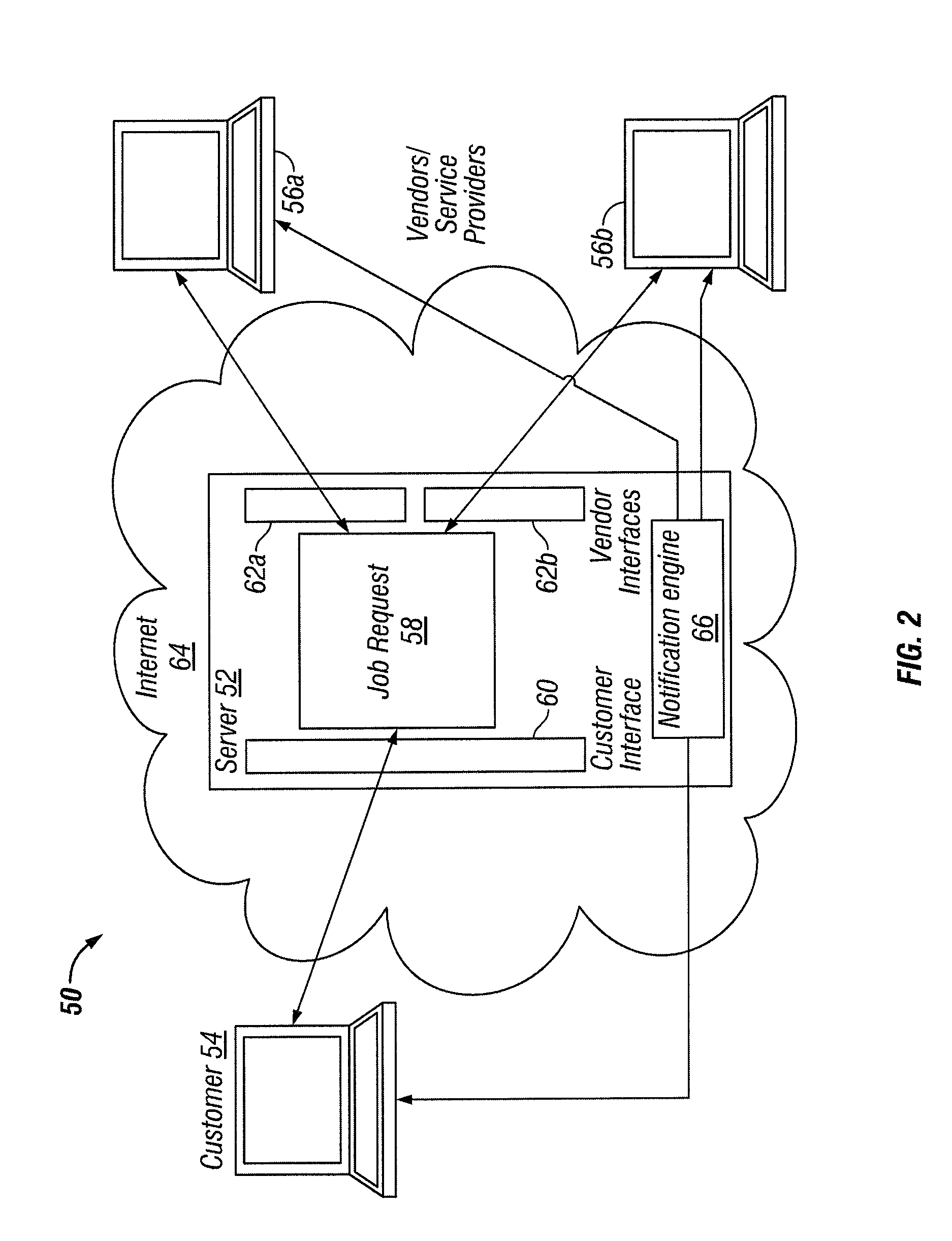Iterative constraint collection scheme for preparation of custom manufacturing contracts
- Summary
- Abstract
- Description
- Claims
- Application Information
AI Technical Summary
Benefits of technology
Problems solved by technology
Method used
Image
Examples
Embodiment Construction
[0020]A scheme for preparing custom manufacturing contracts through an iterative process by which under-constrained job requests are tailored into more or fully constrained requests through a collaborative process between vendors and customers is disclosed herein. An example of this scheme suitable for use in the preparation of custom print job requests / contracts is described in detail so as to provide a complete description of the methods and apparatus of the present invention. More generally, the present scheme provides a marketplace for the solicitation and fulfillment of purchase options, rather than merely a request for an existing product. Therefore, although discussed with reference to such embodiments, upon review of this specification, those of ordinary skill in the art will recognize that the present scheme may find application in a variety of systems and, accordingly, the illustrated embodiments should be regarded as exemplary only and should not be deemed to be limiting ...
PUM
 Login to View More
Login to View More Abstract
Description
Claims
Application Information
 Login to View More
Login to View More - R&D
- Intellectual Property
- Life Sciences
- Materials
- Tech Scout
- Unparalleled Data Quality
- Higher Quality Content
- 60% Fewer Hallucinations
Browse by: Latest US Patents, China's latest patents, Technical Efficacy Thesaurus, Application Domain, Technology Topic, Popular Technical Reports.
© 2025 PatSnap. All rights reserved.Legal|Privacy policy|Modern Slavery Act Transparency Statement|Sitemap|About US| Contact US: help@patsnap.com



